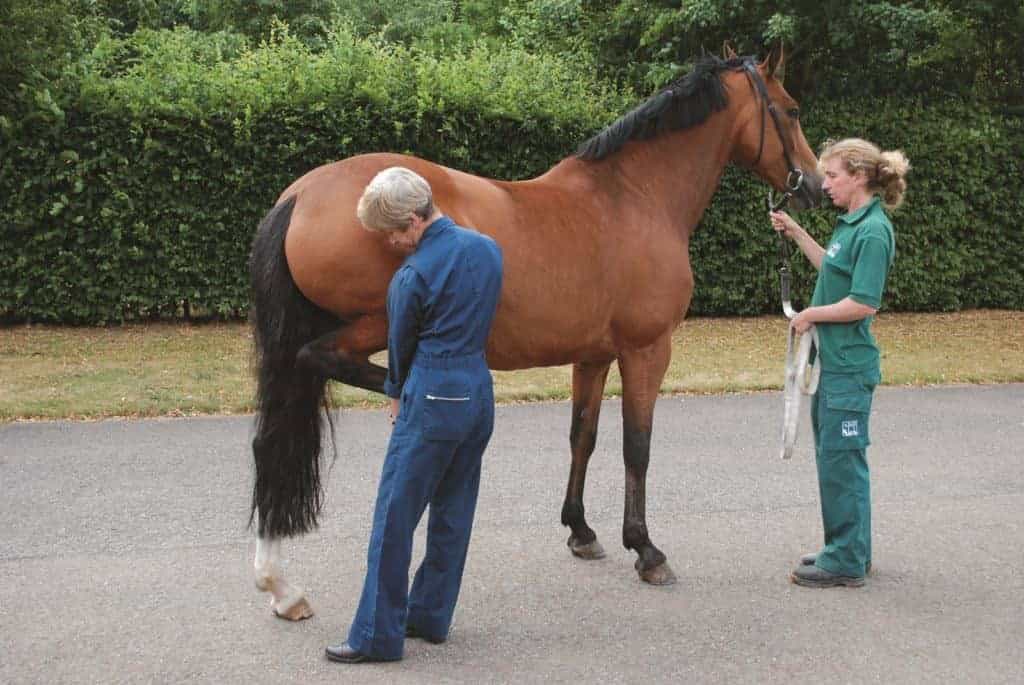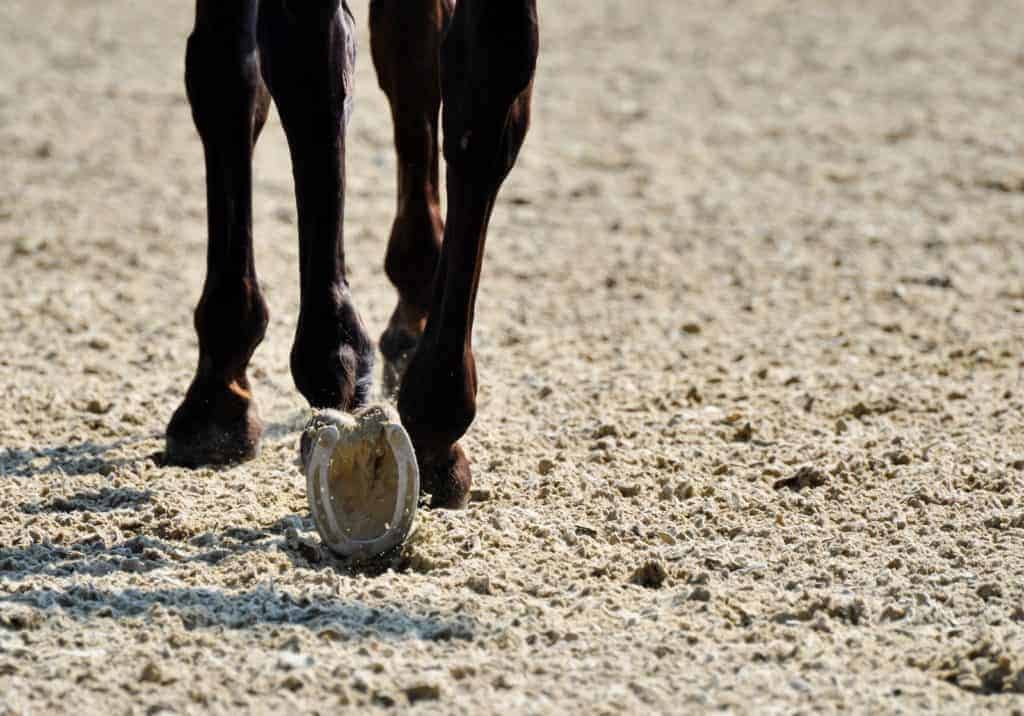
Improving a Horse’s Proprioception During Rehabilitation
Learn about three techniques riders can use to improve motion deficits using the horse’s proprioceptive awareness.

Learn about three techniques riders can use to improve motion deficits using the horse’s proprioceptive awareness.

Good leg conformation in a horse is a must if that animal is to remain serviceably sound for performance.

The Animal Health Trust orthopedics team performs cutting-edge research of equine anatomy and function.

Researchers used sensors to measure a horse’s movements and quantify limb movement outside a gait laboratory.

Researchers evaluated shoeing options to optimize hind hoof unrollment (or toe movement through the stride).

Recent research shows that a sensor-based system can effectively measure a horse?s response to flexion tests.

Slowing down the trot during exams for mildly lame horses could yield more accurate results, researchers say.

Horses topped out at 29% of their body weight in a study that evaluated gait changes when loaded.

Swedish researchers discovered that genetic makeup affects locomotion patterns in horses.

In this particular study, the 5- and 60-second flexions did not yield the same results.
Researchers have identified and are studying a gene mutation linked to altered gait in horses.

Some disorders produce gait abnormalities and lamenesses that aid in a quick and accurate diagnosis.

Some veterinarians are adding a new tool to their lameness diagnosis arsenal

Go back to basics to understand what ataxia is and how to diagnose the cause for ataxia in affected horses.

To get to the bottom of subtle performance-limiting gait abnormalties, vets must consider every puzzle piece.
The most common ailment to affect a horse is lameness. A University of Missouri equine veterinarian has developed a system to effectively assess this problem using motion detection. The system is referred to as “Lameness Locator.” Kevin Keegan
Stay on top of the most recent Horse Health news with
"*" indicates required fields